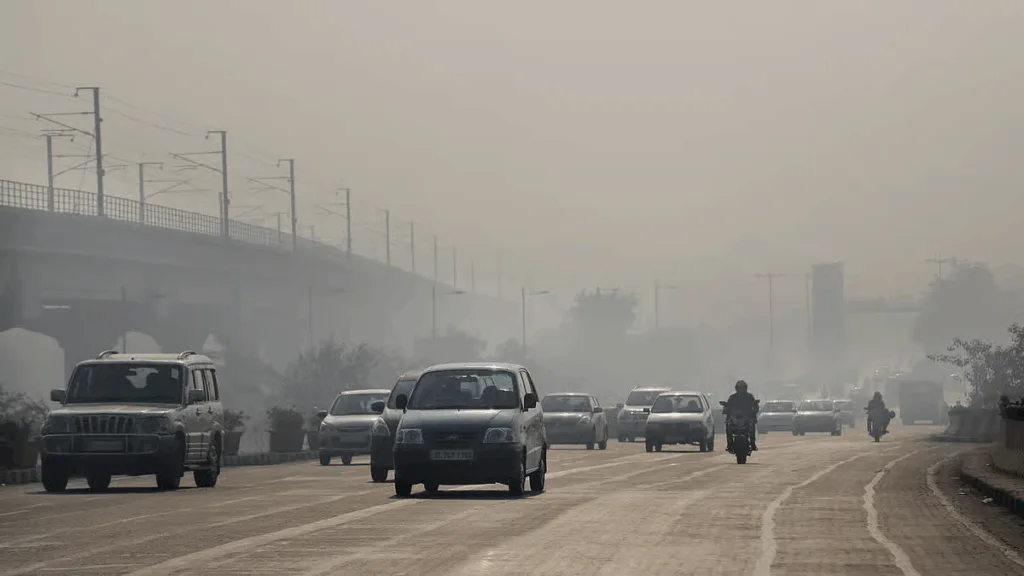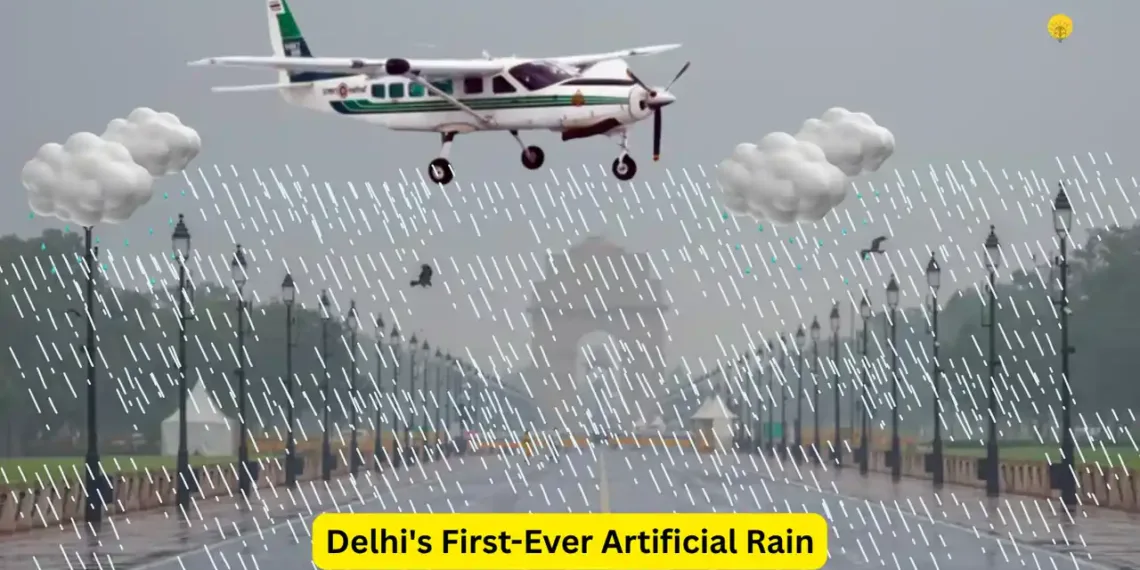Delhi is about to make history. On October 29, 2024, the national capital is set to experience its first-ever artificial rain through cloud seeding, a bold scientific experiment to combat the city’s notorious air pollution crisis. But can spraying chemicals into clouds really clean Delhi’s toxic air, or is this just another temporary fix?
Table of Contents
Delhi Cloud Seeding Project: Quick Facts
| Aspect | Details |
|---|---|
| Launch Date | October 29, 2024 (weather permitting) |
| Project Cost | ₹3.21 crore |
| Technical Partner | IIT Kanpur |
| Aircraft Used | Cessna-206H (stationed in Meerut) |
| Target Area | 300 sq km in Northwest Delhi |
| Chemicals Used | Silver iodide, sodium chloride |
| Number of Trials | 5 planned operations |
| Approval | 23 departments including DGCA |
What Exactly is Cloud Seeding?

Cloud seeding involves spraying chemicals such as silver iodide, salt, or dry ice into clouds from aircraft or drones. These particles attract moisture in the clouds and act as ice crystals, forming water droplets that eventually fall as rain. Think of it as giving nature a gentle nudge to produce rainfall when conditions are almost right but not quite there yet.
Delhi Chief Minister Rekha Gupta announced that experts successfully tested cloud seeding in the Burari area, with the India Meteorological Department forecasting cloud presence on October 28, 29, and 30.
Why Delhi Desperately Needs This
The timing couldn’t be more critical. Delhi’s PM2.5 levels rose to more than 56 times the UN daily health limits after Diwali fireworks, creating a toxic blanket over the city of 30 million people. More than 2 lakh Delhi residents reported acute respiratory illness between 2022 and 2024.
During winter, cooler air traps pollutants—from crop burning, factory emissions, vehicle exhaust, and construction dust—close to the ground. The result? An almost unbreathable atmosphere that forces schools to close and people indoors.
The Science Behind Artificial Rain
The process requires three key ingredients:
1. Cloud Cover: At least 40-50% moisture and cloud presence in the atmosphere
2. Seeding Agents: Silver iodide particles released via aircraft-mounted pyrotechnic flares
3. Condensation: Chemical particles act as nuclei, causing water vapor to condense into droplets heavy enough to fall as rain
The Cessna aircraft equipped with pyrotechnic flares disperses substances safely over target areas, with operations having approval from DGCA and following strict safety and air traffic protocols.
Can It Actually Work?
Here’s the honest truth: Even light to moderate artificial rainfall can temporarily reduce AQI by 50 to 80 points, washing out pollutants from the air. That’s significant—but temporary.
This cloud seeding technology is used in countries worldwide, including the United States, China, Japan, and the UAE, to combat drought and reduce pollution. In 2008, Beijing used artificial rain to prevent it from spoiling the Olympics.
However, experts warn that cloud seeding is temporary in nature and will never substitute for systemic solutions to combat source pollution, such as vehicle exhausts, construction dust, burning of crops, and industrial effluents.

The Hidden Concerns
While promising, cloud seeding isn’t without risks:
Environmental Disruption: Induced rain in one region may decrease rainfall in another, and excessive rainfall may cause flash floods or landslides in susceptible areas
Health Concerns: Prolonged exposure to silver iodide and other chemicals might lead to lung or skin problems
Effectiveness Debate: Research on cloud seeding’s effects remains mixed, with some evidence suggesting limited effectiveness even in target areas
What Happens Next?
Delhi Environment Minister Manjinder Singh Sirsa emphasized that around 2,000 teams are in the field day and night, with work soon beginning for 70 more mechanised sweepers, 70 additional anti-smog guns, water sprinklers, and 140 litter pickers covering 1,440 km of roads.
The government views cloud seeding as one tool in a comprehensive strategy, not a silver bullet. Long-term solutions must address pollution sources: stricter vehicle emission standards, industrial regulation, sustainable farming practices, and construction dust management.
The Bottom Line
Delhi’s cloud seeding experiment represents innovative thinking in desperate times. It might provide a few days of cleaner air—a temporary respite that could improve health outcomes during peak pollution season. But until Delhi tackles the root causes of pollution, artificial rain will remain exactly what it is: a band-aid on a gaping wound.
For residents gasping through toxic winter months, even temporary relief matters. The October 29 experiment will be closely watched—not just by Delhiites, but by polluted cities worldwide searching for solutions.
Stay Informed
Want more updates on India’s environmental challenges and tech solutions? Check out our coverage on environmental technology and science innovations.
Frequently Asked Questions
Q1: How long will the effects of cloud seeding last in Delhi?
Cloud seeding provides only temporary relief, typically lasting a few hours to a couple of days depending on rainfall intensity. The artificial rain can reduce AQI by 50-80 points by washing pollutants from the air, but pollution levels typically return once emissions resume. This is why experts emphasize that cloud seeding cannot replace long-term solutions like controlling vehicle emissions, industrial pollutants, crop burning, and construction dust. The Delhi government views it as an emergency measure during severe pollution episodes, not a permanent solution.
Q2: Is cloud seeding safe for human health and the environment?
While cloud seeding chemicals like silver iodide are generally considered safe in small quantities according to several studies, concerns remain. Prolonged exposure to these chemicals might cause lung or skin problems. There’s also the risk of disrupting natural weather patterns—induced rain in one region could decrease rainfall in neighboring areas, and excessive rainfall might trigger flash floods or landslides. The Delhi project has received approval from 23 government departments including aviation authorities, suggesting safety protocols are in place, but long-term environmental effects require continued monitoring.








